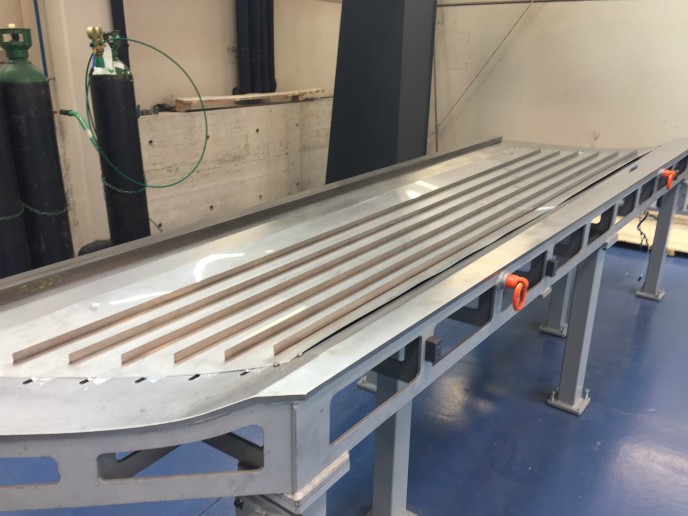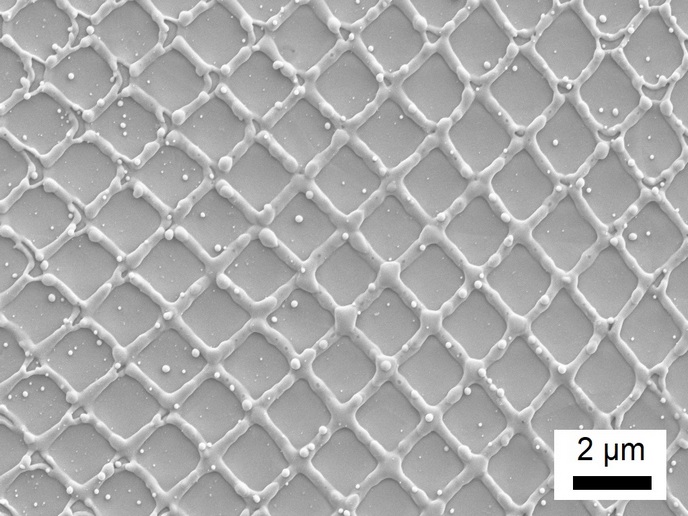Advanced laser techniques for lighter aircraft structures
Current forecasts indicate that world air traffic volume will double over the next 15 years. The challenge going forward is to ensure that this increase is managed efficiently with due respect to the sector’s concrete environmental commitments regarding harmful emissions. Hybrid laminar flow control (HLFC) can greatly help with this by offering future commercial aircraft the potential for significant fuel savings up to 10 %. The concept relies on suctioning air through microperforations in the aircraft skin – these tiny holes help increase smooth airflow, making the aeroplane more aerodynamic, which reduces fuel consumption. Structures that stabilise airflow consist of a double sheet skin for suction control and supporting – the outer skin is based on a microperforated titanium part, while the inner skin is made of a glass fibre reinforced part. The EU-funded project DELASTI advanced the production process for the manufacture of these skins, contributing to significant environmental benefits for European aviation. Joining force from laser beams Until now, the overwhelming majority of all metal aircraft parts were riveted. However, the riveting process itself involves many stages, is expensive and incurs weight penalties arising from the rivet weight. Importantly, rivet holes can also become sources of cracking and corrosion. Laser welding offers a number of benefits compared to conventional riveting. The process enhances welding reliability, is much faster and decreases manufacturing costs. It not only offers significant weight savings, but also improves corrosion behaviour of the parts. A major application of this alternative technology is to join stiffening stringers (the longitudinal reinforcements) to the fuselage skin. In particular, DELASTI researchers used it to attach the stringers to the microperforated titanium panels required for HLFC. “Hybrid laminarity based on microperforated skin is relatively new to the aerospace industry. Aircraft manufacturers have investigated critical issues to ensure the success of the concept, just like the selection of the microperforation process (laser drilling), aesthetical improvements (the microperforated skin cannot be painted) and maintenance management (dust or mosquitos can block holes),” notes Pedro Álvarez Moro, who has been leading DELASTI. Reduced distortion Although laser welding offers several advantages over mechanical joining methods such as improved structural performance, design flexibility, weight and cost savings, the method is not without its issues. Welding induces residual stresses and distortion that may result in loss of dimensional control, costly rework and production delays. Owing to the geometry of the T-joint welds, residual stresses are not homogeneous along the metal skin, generating local distortions – most commonly angular distortion, which is transverse to the welding direction. “Angular distortion spoils laminar flow and causes turbulent flow. The sharp transition lines generated on the reverse of the skin parallel to the welded stringers strongly resemble a Zeppelin airship,” outlines Álvarez Moro. Countering the Zeppelin effect was critical to producing optimum aerodynamic aircraft structures. DELASTI succeeded in removing sharp angular distortion by applying laser straightening on the reverse of the welded samples. Besides angular distortion, the process also effectively removed buckling distortion, giving rise to highly flat panels. The project concentrated its efforts on implementing a solution for the aircraft empennage, focusing on the fin (the vertical tailplane). The end result was a fully functional HLFC at technology readiness level 6. Although its focal point was oriented around the aircraft tail, the ultimate goal is to implement this on the wing, where most of the potential resides.







